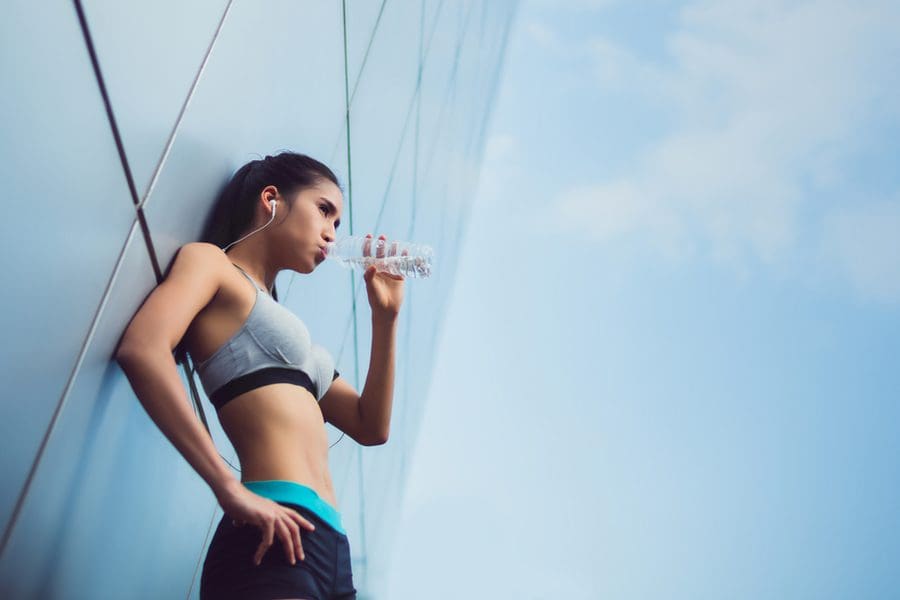Heat exhaustion is real and it is dangerous. Even the fittest athletes need to exercise cautiously in intense heat. A workout that feels easy on a dry, temperate day can be dangerous on a hot, humid afternoon. Professional trainers advise drinking water and dialing down on exertion on the hottest days. The body avoids overheating by sweating. When you get too hot, your body responds by pumping water onto your skin. Heat tolerance is limited by how quickly the body can produce sweat and how quickly sweat evaporates.
Evaporating water carries away the heat and makes you feel cooler. This bit of physics works as long as you keep drinking water to produce more sweat. Sweating works best when air is dry. Water condenses on your skin when humidity is high and evaporation slows. The sticky feeling you notice when working out in humidity comes from your body struggling to evaporate water fast enough to keep you cool.
Putting a strain on your body’s temperature regulation puts you at risk of heat exhaustion, or a much more serious heat stroke. These are ways to protect yourself when you’re working out in extreme summer heat.
Respect your limitations
If you are just starting out on an exercise program and are unaccustomed to rigorous exercise, you should be extremely cautious in hot weather. The same goes if you are older or overweight. Young children also are vulnerable to heat-related illness.
Drink water, and then drink some more
Drink water strategically. Start increasing your fluid intake the day before you work out. Make sure you stay hydrated by drinking enough fluids throughout the day. Weigh both before and after working out and drink 2 or 3 glasses of water to replace each pound of water weight you lose through sweating. On the day of exercise take along at least two chilled water bottles if biking or carry a water bottle if running so you can drink during your workout.
Be smart, slow down
Working out in heat and humidity is much more taxing than exercising in temperate weather. If the weather report warns the temperature or humidity is high, slow down and take breaks. Scale back your workout. Set and maintain slower speeds or plan high-intensity drills of short duration. Your body will tell you if the strain is too much. Listen to it.
Wear light clothing
Heavy, dark clothing attracts sunlight and holds in heat, while clothing that’s light in weight and color deflects the sun’s rays and lets heat escape away from your body. Wearing padding and helmets also traps heat. If your activity requires protective gear, keep your workout short.
Wear UV-blocking sunglasses to protect your eyes. Don’t forget sunscreen. Choose sunscreen that’s at least SPF 30 and apply 30 minutes before you go out. A sunburn can limit your body’s ability to cool down and can also cause dehydration.
Stay in the shade and out of the sun
Move to the shady side of the street or run on a wooded trail to avoid direct sunlight.
Work out early in the morning or early evening when it’s cooler. Avoid the hours between 10 a.m. and 2 p.m., when the sun’s rays are strongest and most direct. While rays might not be as bright in late afternoon, urban areas paved over with asphalt and concrete will still be hot. Find a grassy area if you can for outdoor exercising.
Eat water-laden food after your workout
After you finish exercising, snack on food that’s high in water content. Try crisp lettuce, watermelon, grapefruit, broccoli, tomatoes, melons or peaches. Your body needs water and electrolytes to replace what you’ve lost from sweating.






